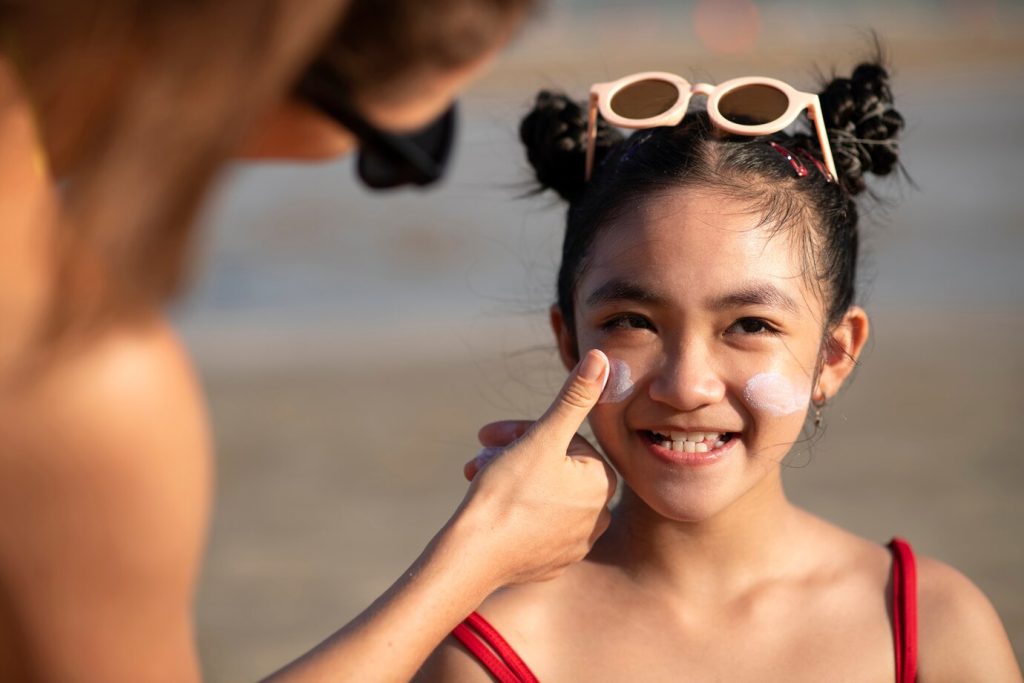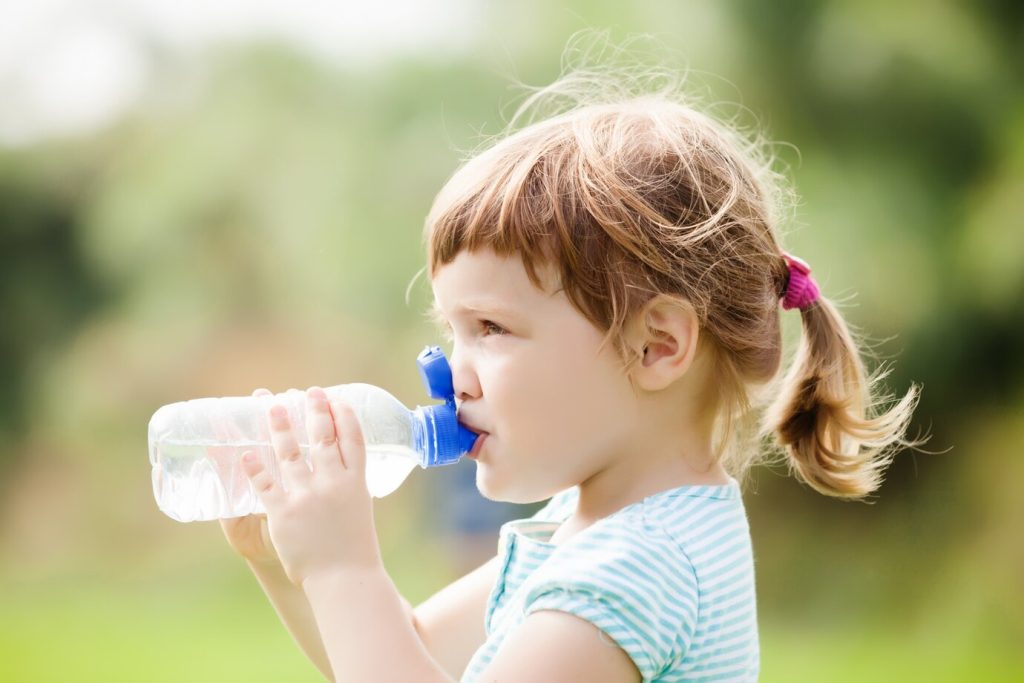
Sun Safety For Kids: Tips for Your Little Ones at Nursery

How can we keep our little ones safe under the sun?
Sun safety for kids is a concern every parent or caregiver shares—especially when those warm, sunny days arrive and outdoor adventures become part of the daily routine. Whether your child is playing at nursery or just coming along for a quick errand, it’s important to remember how delicate young skin is and why it needs extra care under the sun.
Even on cloudy days, the sun’s rays can still cause harm. Children can burn easily, and those early sunburns aren’t just painful—they can also increase the risk of skin problems, including skin cancer, later in life.
As temperatures climb during spring and summer, kids are also more prone to losing fluids and becoming dehydrated. And don’t forget about those hot surfaces—pavement, sand, car doors, or playground equipment can heat up quickly and burn tender skin. That’s why practicing sun safety for kids is one of the most important things you can do to keep your child protected, comfortable, and free to enjoy the sunshine.
Why Is It Important to Keep Sun Safety for Kids?
Looking after our children’s skin is more than just a summertime task—it’s a part of caring for their long-term health and comfort. Young children have sensitive skin that can burn much faster than an adult’s. That’s why sun safety for kids isn’t just a good idea—it’s truly essential.

Too much sun, even for a short time, can have lasting effects. Practicing sun safety not only protects kids from discomfort today but also helps prevent health problems down the road. Here are a few important reasons why it matters:
- Children burn more easily – Their skin is thinner and more sensitive, making them more vulnerable to the sun’s harsh rays.
- Sunburns hurt – A bad burn can make a child uncomfortable, disrupt sleep, and make playtime difficult.
- Hot surfaces can cause burns – Pavement, playground equipment, or even car seats can heat up quickly and burn tender skin.
- Sun exposure increases dehydration risk – Active kids lose fluids fast, especially in warm weather.
- Increased risk of skin cancer later in life – Studies show that sunburns in childhood raise the chance of skin damage and skin cancer as they grow older.
- Encourages healthy habits early – Teaching kids about sun safety now helps them make smart choices as they grow up.
By staying prepared and practicing sun safety for kids, we’re giving our little ones the freedom to enjoy the sunshine while staying safe, healthy, and happy.
Best Times of Day to Limit Sun Exposure
When the sun is shining and the weather is warm, it’s only natural for children to want to be outside playing and exploring. While sunshine can be a great source of vitamin D and a mood booster, it’s also important to know when it’s safest for kids to enjoy outdoor time.
The sun’s rays are strongest—and most harmful—during certain hours of the day. Limiting your child’s time in direct sunlight during these peak hours is one of the easiest and most effective ways to practice sun safety for kids.
So, when is the sun strongest?
Generally, the sun’s ultraviolet (UV) rays are at their most intense between 10 a.m. and 4 p.m. During these hours, the risk of sunburn and heat-related issues is much higher, especially for young children with delicate skin.
Here’s how you can help protect your little ones:
- Plan outdoor activities earlier or later in the day – Aim for morning play before 10 a.m. or late afternoon fun after 4 p.m. This allows kids to enjoy fresh air and sunshine without being exposed to the harshest rays.
- Take advantage of shaded play areas – If your child must be outside during peak hours, look for shaded spots under trees, umbrellas, or play tents.
- Use the shadow rule – A simple trick: if your child’s shadow is shorter than they are, the sun is too strong. That’s a good sign it’s time to seek shade or head indoors.
- Coordinate with nursery routines – Ask your child’s nursery about their outdoor schedule. Many nurseries are aware of sun safety guidelines and will avoid taking children outside during the hottest part of the day.
By adjusting your child’s outdoor schedule just a little, you can make a big difference in keeping their skin protected and their bodies cool and hydrated. It’s a gentle, thoughtful way to care for them while still letting them enjoy all the wonders of being outside—an easy and effective step toward practicing sun safety for kids every day.
Sun Safety for Kids: Simple, Everyday Tips to Keep Your Child Protected from the Sun
When the warmer months arrive, it’s natural to want to spend more time outside with your little one. But with all that sunshine comes the need to be extra careful. Sun safety for kids means more than just sunscreen—it’s about creating safe outdoor routines that protect your child while still allowing for fun and fresh air.
Start Slowly and Build Up Time Outdoors
At the beginning of spring or summer, it’s a good idea to ease into longer outdoor play. Try spending shorter periods outside at first, then slowly increase the time over a few days. This helps your child’s skin adjust and lowers the chance of sunburn.
Whenever you can, aim to stay inside or find shade during the hottest parts of the day, usually between 10 a.m. and 4 p.m. That’s when the sun’s rays are strongest and can do the most damage.
Tips for Preventing Sunburn
Babies and young children have very delicate skin that needs special care. Here’s how to keep them safe and comfortable:
- Keep babies out of direct sunlight as much as possible, especially if they are under 6 months old.
- Dress your baby in light, loose-fitting clothes that cover their arms and legs. A wide-brimmed hat can help shade their face and neck.
- Use a sunshade or umbrella on strollers to block direct sunlight while you’re out.
- For babies over 6 months, apply a small amount of SPF 30 sunscreen on exposed areas like the hands or cheeks. Avoid putting sunscreen near the eyes and mouth.
- For older kids, make sure they wear UV-protective clothing, including a sun hat with a neck flap and sunglasses with 100% UV protection.
- Apply sunscreen at least 30 minutes before going outside. Don’t forget places like the ears, neck, tops of feet, and back of the legs.
- Reapply sunscreen every 2 to 3 hours, or more often if your child is swimming or sweating.
- Use lip balm with SPF 15 to protect their lips from drying or burning.
Staying Hydrated and Avoiding Overheating
Children can become dehydrated before they even realize they’re thirsty. That’s why it’s important to remind them to take water breaks often, especially while they’re playing.

Look out for signs of heat exhaustion, which can include:
- Feeling very tired or weak
- Complaining of cramps in the legs or tummy
- Cool, clammy skin
- Looking flushed or extra sweaty
If you notice these signs, bring your child to a shaded or cool spot right away. Offer small, frequent sips of water, and remove any extra clothing. Fanning or using a damp cloth can help them cool down gently.
Extra Tips for Safe Outdoor Play
- Choose playgrounds with shaded areas or bring along a portable sunshade.
- Pack a wide-brimmed hat and extra clothes in your child’s nursery or day-out bag.
- Encourage play in shaded areas, especially during peak sunshine hours.
- Teach children to take “cool down” breaks regularly in the shade or indoors.
By taking these simple steps, you’re helping your child stay safe, comfortable, and full of energy while enjoying the outdoors. Sun safety doesn’t mean missing out on fun—it just means making smart choices to protect your little one’s health now and in the future
Children and Vitamin D: Sunshine and Smiles in Balance
We all want our children to grow up strong and healthy—and vitamin D plays an important role in helping that happen. It helps their bodies absorb calcium, which keeps bones and teeth healthy and strong. One of the main ways we get vitamin D is through sunlight, but that doesn’t mean children need lots of sun exposure to get enough. That’s where understanding sun safety for kids becomes so important.
Do Kids Need Direct Sunlight for Vitamin D?
Not always. Babies, especially those who are breastfed or drinking fortified formula, usually get the vitamin D they need through their diet. They don’t need to be in direct sunlight to stay healthy. In fact, it’s safer to keep babies out of direct sun altogether to protect their delicate skin—a key part of practicing sun safety for kids.
Older children need only a small amount of sun—just a few minutes a day on hands, face, or arms may be enough during spring and summer months. There’s no need to spend long hours in the sun for the sake of vitamin D.
Other Ways to Get Vitamin D
Sunshine isn’t the only source. Many foods can also help boost vitamin D levels, such as:
- Fatty fish like salmon, tuna, and mackerel
- Egg yolks
- Fortified milk or plant-based alternatives
- Breakfast cereals with added vitamin D
- Mushrooms exposed to sunlight
If you’re not sure whether your child is getting enough, it’s always okay to ask your GP or paediatrician. They might recommend a supplement, especially in winter months when sun exposure is lower. Making informed choices is part of building a smart approach to sun safety for kids.

Helpful Tips to Balance Sun Safety and Vitamin D
- Let your child play outside during the safer sun hours (early morning or late afternoon), even for just a short time.
- Use protective clothing and shade—these won’t block all vitamin D absorption, but they will keep your child safe.
- Focus on diet first, especially for younger children, to ensure consistent vitamin D intake without needing direct sun.
- Talk to your child’s childcare provider to understand their sun safety policies and how they balance outdoor time with protection.
Creating a balanced approach to health means protecting your child’s skin while still enjoying all the benefits of fresh air and daylight. By prioritizing sun safety for kids, you’re giving your little one the best start to a bright and healthy future.
Wrapping Up
Sunshine can be one of childhood’s greatest joys—but it comes with responsibilities too. As parents and caregivers, it’s our role to make sure those sunny moments are safe and happy ones. Practicing sun safety for kids isn’t about limiting fun; it’s about creating thoughtful routines that protect their health while still letting them explore, play, and enjoy the outdoors.
From choosing the right time of day for outdoor play to using sunscreen, providing protective clothing, and making sure children stay hydrated, every small action adds up. These gentle steps not only prevent sunburns and overheating but also help build lifelong habits of caring for their skin and well-being.
By staying informed and prepared, and working closely with your child’s nursery or daycare, you’re offering them more than just protection—you’re giving them the freedom to enjoy the sunshine with confidence. And that’s a gift that will shine for years to come.
Read also: Separation Anxiety: Making Nursery Drop-Offs Easier